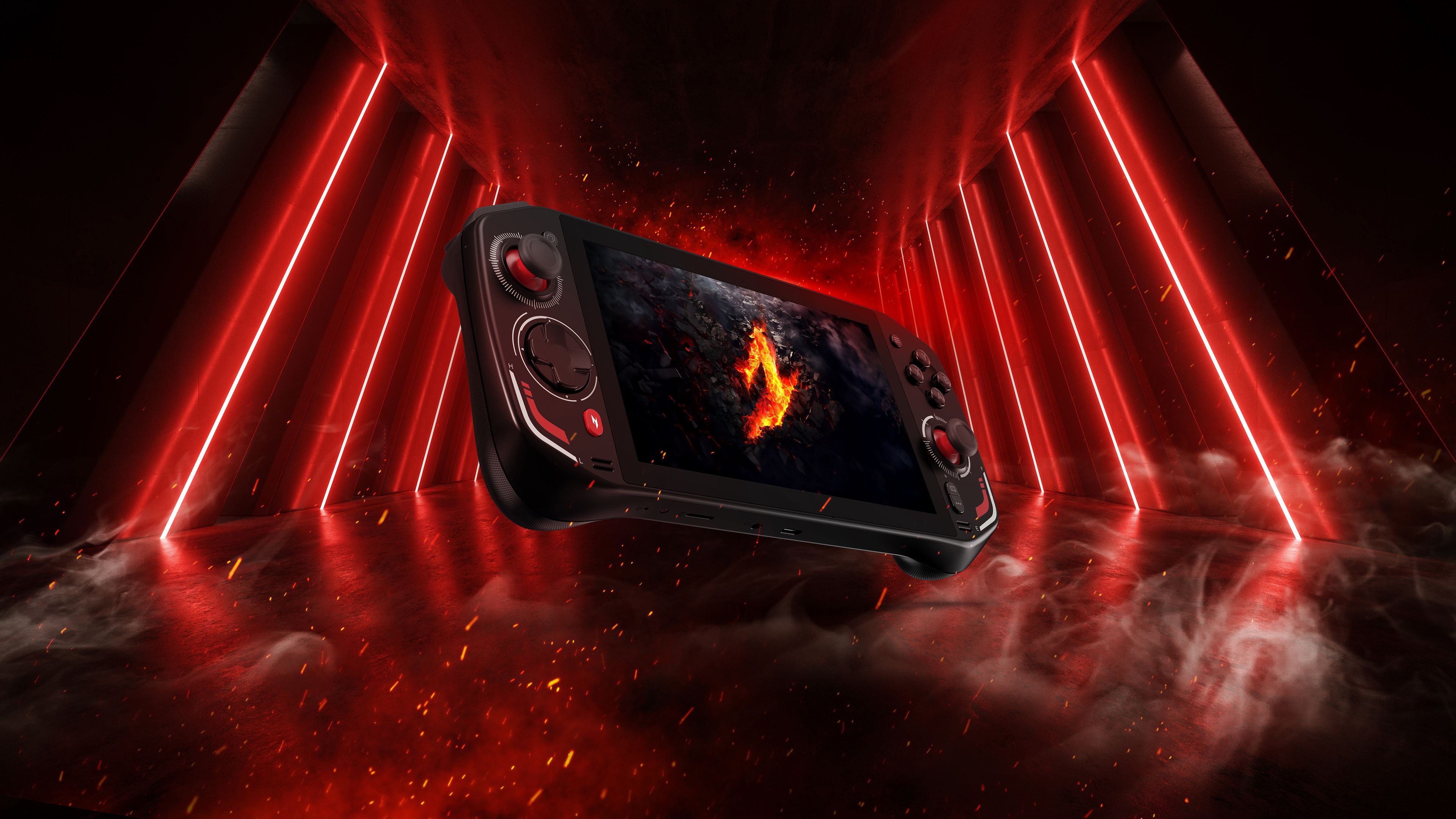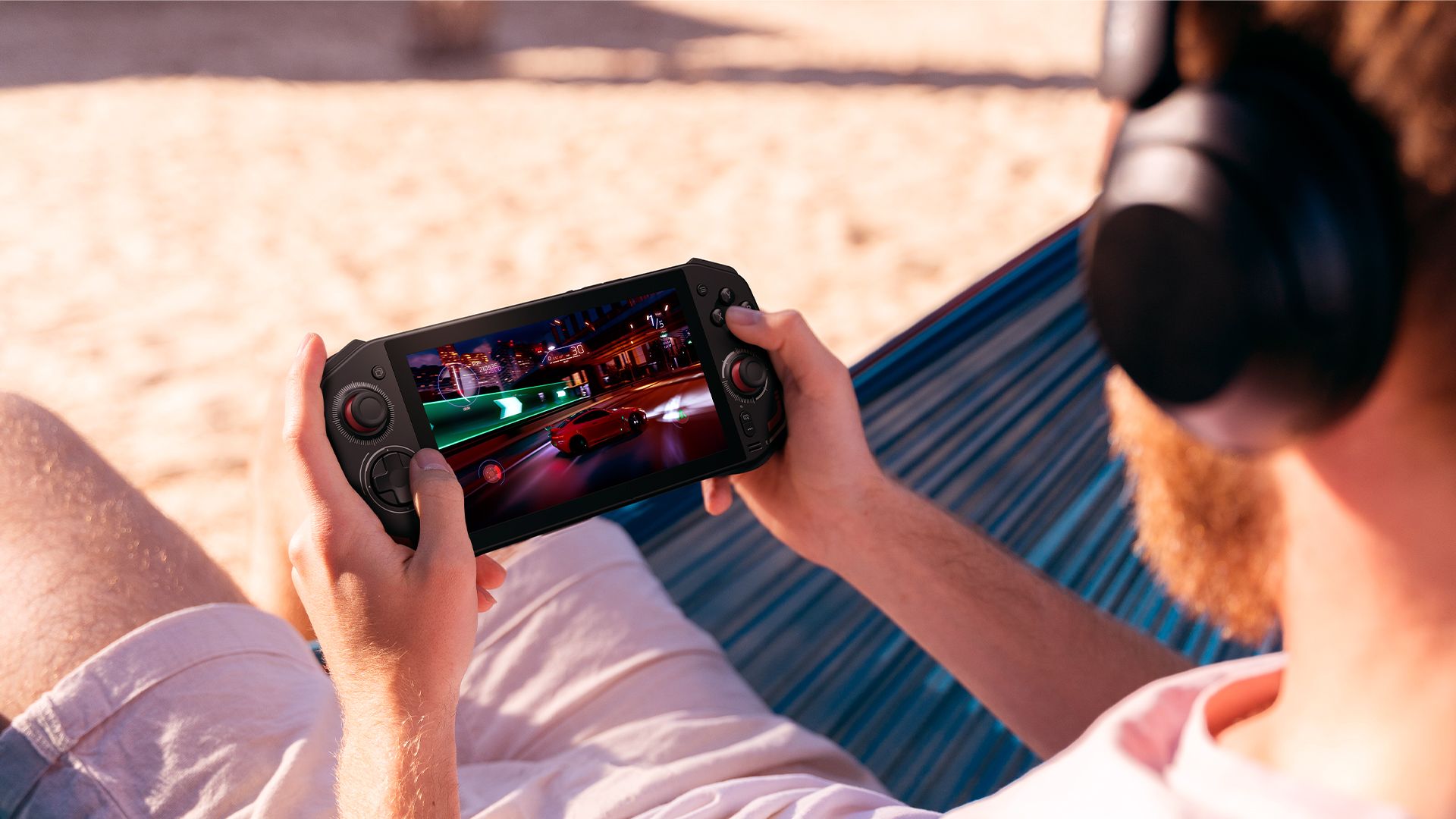
Acer unveiled its first dive into the Windows gaming handheld market at IFA Berlin 2024 with the Nitro Blaze 7, but it may have overlooked one vital component.
Acer's Nitro Blaze 7 Windows gaming handheld PC is built with an AMD Ryzen 7 8840HS processor, AMD Radeon 780M integrated graphics (which is the same GPU on AMD Ryzen Z1 Extreme as seen in the Asus ROG Ally and Lenovo Legion Go), up to 2TB of SSD storage, and 16GB of LPDDR5X-7500 RAM.
The Nitro Blaze 7 offers a 7-inch IPS panel at 1,920 x 1,080-pixel resolution and 144Hz refresh rate, rated at 500 nits of brightness and 100% sRGB coverage.
This makes its display a bit better than the Asus ROG Ally and MSI Claw due to their 120Hz refresh rate, but it cannot compete with the Lenovo Legion Go's 8.8-inch 2,560 x 1,600-pixel resolution display or its 97% DCI-P3 coverage rating (which makes it far more colorful).
Its design also stands out among competitors, regardless of whether it's to your liking. Its red and black color scheme gives it a stereotypical "gamer" aesthetic, but I do appreciate the unique decals akin to a spaceship's control panel.
I also love that Acer included a dedicated keyboard pop-up button on the device. It doesn't take too long to get used to using button combinations on other Windows gaming handhelds, but having one dedicated to this function will make it more accessible for the average gamer.
However, while Acer's first attempt at a Windows gaming handheld seems promising, there's one concerning element in its specs sheet that has us a bit wary.
The Acer Nitro Blaze 7's one flaw
The Asus ROG Ally launched last June to critical acclaim and is considered the earliest official Windows gaming handheld, but any first attempt comes with some missteps. One such flaw related to its longevity.
Battery life is vital on any mobile device, but handheld gaming consoles are in need of high power efficiency. They're meant to be played in-hand, and gaming drains battery fast.
Great battery life can come in the efficiency of the processor itself, the size of the battery, or how much power is being allocated to other features. However, it's often a combination of all three that results in a long-lasting machine.
The Asus ROG Ally launched with a 40Wh battery, which wasn't great and resulted in it surviving 5 hours and 51 minutes on the Laptop Mag battery test, which involves continuous web surfing over Wi-Fi at 150 nits. Even though the Lenovo Legion Go upgraded to a 49.2Wh battery, it only lasted 4 hours and 6 minutes on the same test (likely as a result of its colorful 2K-resolution display).

The MSI Claw took things a step up with a 49.2Wh battery, and it lasted 6 hours and 8 minutes before running out of juice. However, the Claw's Intel processor makes it difficult to directly compare, as the ROG Ally and Lenovo Legion Go are powered by AMD.
However, the Asus ROG Ally X promised to see an incredible boost in battery life, and when we tested it ourselves, we saw exactly that. This is through its upgrade to an 80Wh battery, which is twice the size of the original. On the same battery life test, it lasted 8 hours and 19 minutes before doing, which is an enormous increase.
In our own gaming tests, where I ran Elden Ring: Shadow of the Erdtree at 1080p with graphics set to maximum, ray tracing on full, brightness at full, and operating mode on Turbo, I saw the Asus ROG Ally X (2 hours and 15 minutes) more than double the Asus ROG Ally's (1 hour and 1 minute) battery life.
We're also seeing that the MSI Claw 8 AI Plus, being unveiled next month according to Lowyat.net, will also feature an 80Wh battery with its latest model.
This made me believe that battery sizes this large are what we can expect from future Windows gaming handhelds, but the Acer Nitro Blaze 7's 50Wh battery could prove to be a bit lackluster when compared to its current competition. If all of its competition is crushing it in longevity, Acer might have trouble standing out.
But not everything is stacked against Acer, as it could make up for this difference elsewhere.
How the Acer Nitro Blaze 7 can stand out
It's no secret that the Asus ROG Ally X is a higher-end refresh of its siblings, available at a steep price of $799 (its other models launched at $599 and $699). If the Acer Nitro Blaze 7 is cutting back in certain areas, it could potentially undercut Asus in cost.
We might also see unexpected efficiency out of the AMD Ryzen 7 8840HS that could make it last a lot longer than anticipated, but we don't expect this due to our poor experiences with this chip's efficiency in the past.
The only thing that Acer has going for it that stands out when compared to its rivals is its 144Hz refresh rate and the ability to customize it with up to 2TB of SSD storage, which would make it a worthwhile pick for those who believe 512GB or 1TB isn't quite enough.
Regardless of our concerns, we're excited to test the Acer Nitro Blaze 7 itself and get a feel for what the company has done to make it stand out from the competition.







